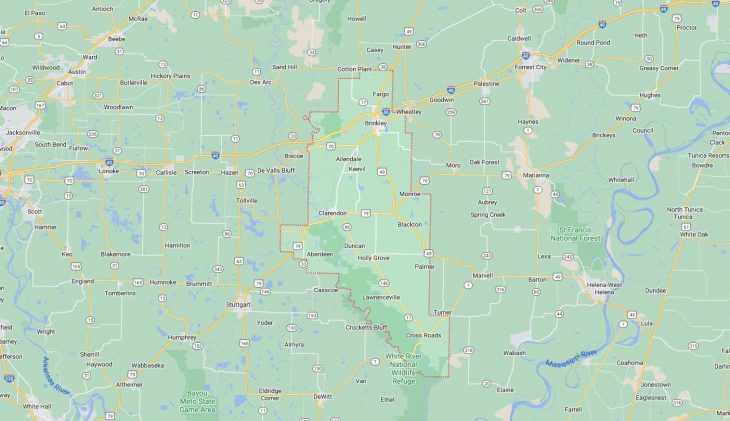Cities and Towns in Monroe County, Arkansas
Founded on November 2, 1829, Monroe County is one of 75 counties in the state of Arkansas. Historically, Monroe County was formed from Phillips and Arkansas counties. The city of Clarendon is the county seat. With FIPS code of 95, Monroe County has a population of 6,683 and area of 621.41 square miles (1,609 km²).
List of all cities in Monroe County, AR alphabetically
| City/Town | Postal Code | Area Code |
| Aberdeen, AR | 72134 | 870 |
| Blackton, AR | 72069 | 870 |
| Brinkley, AR | 72021 | 870 |
| Clarendon, AR | 72029 | 870 |
| Holly Grove, AR | 72069 | 870 |
| Lawrenceville, AR | 72069 | 870 |
| Lookout Store, AR | 72134 | 870 |
| Monroe, AR | 72108 | 870 |
| Palmer, AR | 72069 | 870 |
| Pine City, AR | 72069 | 870 |
| Preston Ferry, AR | 72134 | 870 |
| Raymond, AR | 72069 | 870 |
| Roe, AR | 72134 | 870 |














































